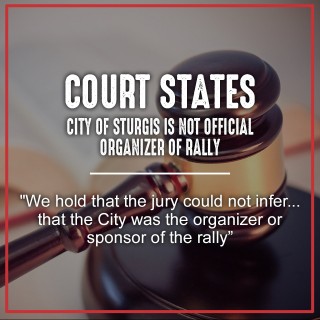NO SUCH THING AS A SUICIDE SHIFTER!

I RODE SUICIDE CLUTCH FOR TEN YEARS!
Riding With No Front Brake Really Is Suicide…..
THE STOCK HARLEY-DAVIDSON “ROCKER” CLUTCH IS PICTURED!
I’ve seen the term “suicide shifter” used in describing a plain old ordinary tank shift. Simple ignorance allows that term to be used. There is no such thing as a “suicide shifter.” Nobody has ever died because of using “hand shift.” There is however such a thing as a “Suicide Clutch.” The term suicide clutch came into being when choppers were born. I’ll tell ya why. Back in the good old days, a long time before foot shift was standard equipment, tank shift with foot-clutch was the most common method used to get from one gear to another. Let’s use the Harley-Davidson motorcycle of the 1950’s as an example. The foot clutch was of the rocker type, meaning it could be “rocked” to the disengaged position, and it would stay in that position until the rider nudged it with his or her foot in the opposite direction. Harley-Davidson motorcycles were “heel down” disengaged, Indian motocycles (no R is the way Indian Motocycle Company spelled it) were toe down disengaged. The rider could and would control the RATE of engagement with his or her foot. In other words, the clutch was not totally spring loaded like the clutch in a car. Clutch pedal engagement is/was determined by foot position. If the rider slid his foot off the clutch pedal while it was in the disengaged position it would stay disengaged. The stock/standard rocker clutch did have a spring that would pull the pedal towards the engaged position only after the clutch was “rocked” out of the disengaged position. Safety first for this style clutch.
Early Chopper builders modified the rocker clutch so it would not, and could not stay “rocked out” in the disengaged position. This allowed for much faster clutch action. It also meant that the rider had to maintain constant foot pressure on the clutch to keep it disengaged. NO big deal! BUT!….. Many early chopper builders/riders/outlaw bikers also decided to remove the front brake. This was done not only for cosmetic reasons, but also because removing the front brake also lightened the motorcycle quite a bit. If you look at most old chopper photos from the 1950’s and 1960’s, even through the 1970s, many times you’ll see custom bikes or choppers with a clean, lean looking front-fork that has no front brake. This is when the suicide name caught on.
NO FRONT BRAKE, JOCKEY SHIFT, EQUALS SUICIDE CLUTCH!
That shift lever looks like it is mounted on a ratchet-top doesn’t it?
A motorcycle rider while riding steep hills such as found in the city of San Francisco was subject to traffic lights like all the other traffic. If that rider was riding a chopper equipped with no front brake, hand shift (jockey shift or tank-shift) and a clutch that was modified to act as a spring loaded clutch, that rider could not easily stop and start at traffic lights located at streets located at the top of a hill. If the rider stopped at light on a steep hill using the right foot on the brake, the transmission would need to be neutral (remember the clutch could NOT be rocked into a disengaged position and stay there). The right foot would be holding the brake engaged the left foot would be on the ground with the left leg holding the bike upright. It took speed and coordination to quickly put the right foot down to hold the bike up, then the left foot to push the clutch pedal down, the left hand would slam the tranny into first gear, and the rider could then let the clutch out and go. This sequence of events was virtually impossible to do on a steep hill, so riders took to running the yellow or early red traffic lights rather than attempting a stop on the hill. More than a few were killed running the light. And that, my friends is how the suicide clutch got his name. That’s my story, and I’m sticking to it! Enough riders were killed for other riders (and the cops) to consider it suicide to ride a motorcycle equipped as described. But then again, all the macho guys went straight to the suicide set-up, for macho reasons alone. Back in the good old days real bikers shunned the wearing of leather. Back then, only sissies wore leather. Also, if a jockey-top is mounted rather than a ratchet-top (four speed transmission only) when hand shifting, blazingly fast power shifts can be made, and wheelies will happen. It’s more fun than a high speed chase!
I rode a rigid frame Panhead for years with a foot-clutch, jockey shift )jockey top trans), and no front brake. I purchased the motorcycle so equipped and once I got familiar with it, I saw no reason to change. I also wore a leather jacket; I like my skin too much I guess. When myself and friends rode up to San Francisco to cruise the Haight Ashbury and North Beach districts, the guys with front brakes rode behind the guys without front brakes, and held them in place on the steep hills at traffic lights by putting their front wheel against my and others rear wheel. That’s what friends are for. Hardly anyone runs without a front brake these days, but there are a few diehard out there. Foot clutch, no front brake, and hand shift. The owner/riders usually make a point of riding it exclusively on flat roads or road with stoplights on the hilly parts.. I don’t blame them, anything else is beyond scary. Then again, I miss my old Panhead; I must have put 200,000 miles on that bike without committing suicide. Came close a few times though. I’ll tell ya about one of those later on.
Buck Lovell
Chief of the Lost Dog Riders MC








